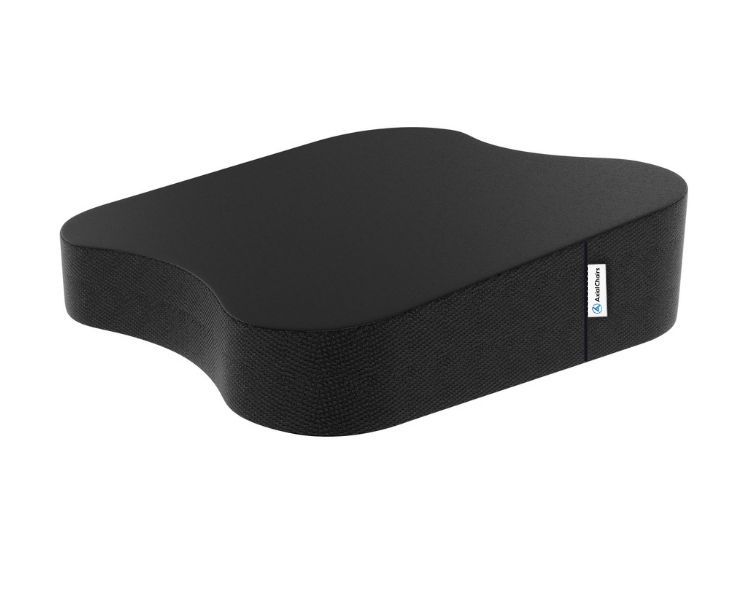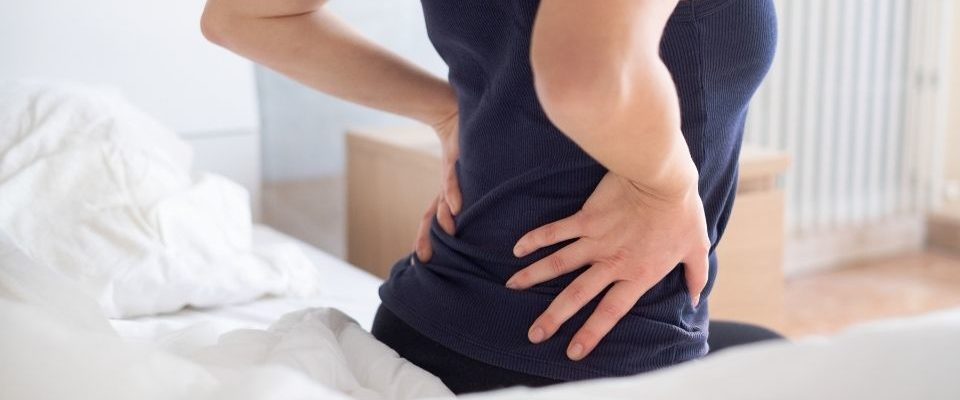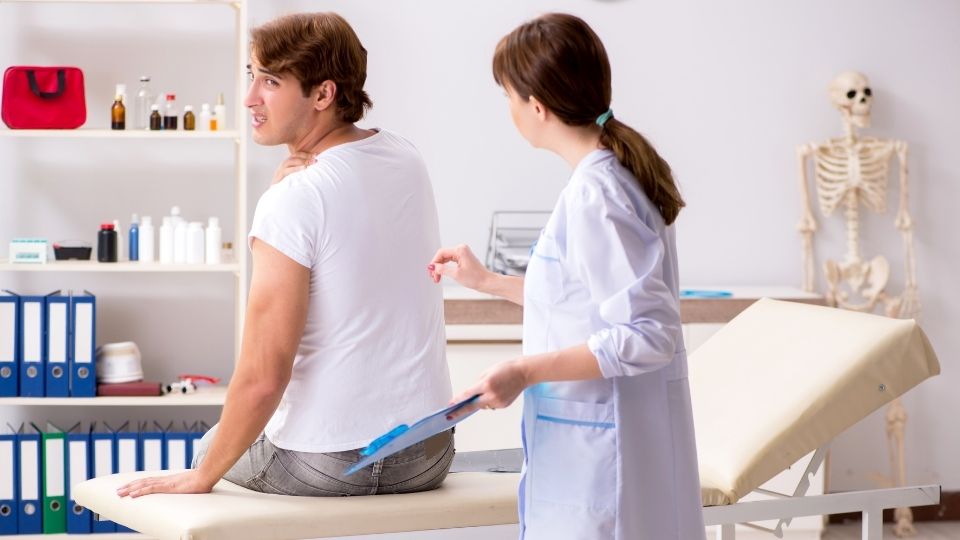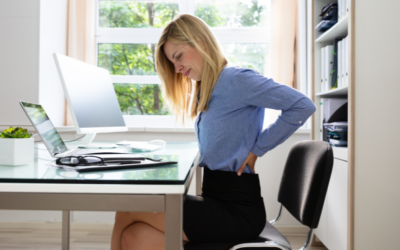As a seasoned chiropractor, I’ve had the pleasure of meeting countless individuals seeking relief from various spinal issues, and one condition that often comes up in conversations is spinal stenosis. While I’m not here to promote chiropractic treatments explicitly, I am going to share some tips that might help those with spinal stenosis live a more comfortable and pain-free life. Remember, I’m not making any medical claims, just providing some friendly advice based on my experience in the field.
As a general rule, spinal stenosis can be helped with exercises like walking, swimming, and strength training can be especially helpful in improving one’s quality of life. Additionally, adopting good posture and avoiding activities that exacerbate symptoms can also provide relief.
As a seasoned chiropractor with more than three decades of experience and specialized education as an ergonomist, I have devoted myself to the investigation of seated positions for individuals suffering with back pain. My understanding in this domain is unmatched, and I have disseminated my perspectives via diverse platforms, including TV appearances, authorship of a book on proper posture, a thriving Kickstarter campaign for ergonomic seat cushions, and a well-received YouTube channel.
What Is Spinal Stenosis?
To set the stage, let’s quickly define spinal stenosis. It is a condition where the spaces in the spine narrow, spinal canal and spinal cord which can put pressure on the nerves (causing spinal pain) that travel through the spine. This narrowing can be caused by factors such as aging, arthritis, or spinal injuries. Symptoms of spinal stenosis can include pain, numbness, or weakness in the legs, back, neck, or arms.
4 Top Tips for Spinal Stenosis Support
Now that we know what we’re dealing with, let’s dive into some spine-friendly habits that can help support recovery and provide relief for those with spinal stenosis.
Sitting Properly
You’ve heard it a thousand times – sit up straight! But what does that really mean? For starters, avoid slouching or leaning forward. Instead, keep your feet flat on the ground and your knees at a greater than 90-degree angle. Use an ergonomic seat cushion to support the natural curve of your lower back. And hey, while you’re at it, make sure your workstation is ergonomic, with your computer monitor at eye level and your keyboard and mouse close to your body. Take breaks and stand up every 30 minutes to give your spine some well-deserved rest.
Designing an Ergonomic Chair: Clues and Suggestions
To address your seating concerns most effectively, it’s important to focus on multiple aspects, with chair adjustment being a primary consideration. Different strategies can be employed to achieve this, such as introducing an ergonomic seat pad and back support. These improvements can alleviate stress on your back and legs, heightening comfort and posture during prolonged periods of sitting. Furthermore, ensure your feet are steadily on the ground and that there’s adequate space between your chair and desk. By adhering to these pointers, any conventional hard chair can be converted into an ergonomic haven that bolsters long-term health and well-being.
Ergonomic Seating Accessory
An ergonomic seat wedge (illustrated above) can be deployed to correctly position your spine and boost stability. This premium natural latex cushion assists in reinforcing core muscles while reducing tension in other areas, such as the shoulders and neck. Moreover, maintaining an upright posture is less demanding on your hips and knees, as it activates more muscle groups simultaneously compared to leaning on a cushioned surface. This erect posture deters strain-inducing habits that people may inadvertently develop while working.
Best Seat Cushion for Spinal SupportAxial Ergonomic Seat Cushion® | Seat Chair Wedge
Quick Guide: A 30-Second Summary

All Day Comfort & Support
Product Name
Axial Designs™ Seat Cushion
Price
$149
Warranty
1 Year
Type
Posture Wedge
Top Layer
100% Natural Latex (Molded)
Bottom Layer
High-Density Foam
Top Material
Isometric Grippy Vegan Leather
Bottom Material
Non-Slip Material
Side Material
3D Breathable Fabric
Standing Tall
As we move on to the art of standing, the key is to maintain proper posture. Keep your head held high, shoulders back, and chest out. Don’t lock your knees, and distribute your weight evenly between your feet. You can even try the “wall test” – stand with your head, shoulders, and buttocks touching a wall, then slide your hand behind the small of your back. Ideally, there should be just enough space for your hand to fit snugly.
I’ve written a complete hands-on review about the best sitting position for sciatica, and here is what I tested best with my sciatica patients.
Sleeping in Alignment
Ah, sleep – the time when our body heals and rejuvenates. To make the most of this restorative period, focus on maintaining spinal alignment. Side sleepers should use a pillow between their knees to keep their hips and pelvis aligned. Back sleepers can benefit from placing a pillow beneath their knees to reduce pressure on the lower back. As for stomach sleepers, consider switching to a different position, as this can strain the neck and spine.
Gentle Exercise

No blog post about spinal health would be complete without mentioning exercise! Consult with your healthcare provider about which activities are suitable for your situation. Generally, low-impact exercises like swimming, walking, or yoga can help strengthen your core muscles and improve flexibility, which is essential for spinal support.
Remember, these tips are not a substitute for professional medical advice, diagnosis, or treatment. Always consult your healthcare provider if you suspect you have spinal stenosis or any other medical condition. But hey, adopting spine-friendly habits can be a great way to show your spine some love and potentially improve your overall quality of life!
Spinal Stenosis Exercises to Avoid for a Healthy Spine
In my clinical experience, I’ve found that individuals with spinal stenosis should avoid certain exercises that can exacerbate their symptoms. High-impact activities and exercises that involve excessive bending of the spine may worsen spinal stenosis pain. Instead, low-impact activities like swimming or walking have proven to be helpful in alleviating discomfort in the lower back. Although there is no “cure” for spinal stenosis, I’ve seen that a personalized physical therapy plan can ease symptoms and improve the quality of life for my patients.
The Newest Spinal Stenosis Treatments That Show Promise | NYU | Healthcare Provider | Surgery
Throughout my career, I’ve seen the introduction of new spinal stenosis treatments, such as minimally invasive spine surgery and targeted steroid medication, especially by NYU, Mayo Clinic and Cleveland Clinic. These approaches can provide relief when nonsurgical treatments like pain medication and physical therapy do not adequately relieve symptoms. It’s important to remember that while these treatments can help manage pain, they do not permanently alter the conditions causing spinal stenosis. As a chiropractor, I always strive to stay updated on the latest treatment options to offer the best care to my patients.
Physical Therapy vs. Surgery: The Best Painkiller for Spinal Stenosis
For many patients with spinal stenosis, I’ve found that nonsurgical treatments such as pain medication and physical therapy can help relieve symptoms. Physical therapy focuses on strengthening the muscles surrounding the lumbar spine and improving flexibility. However, in some cases, spine surgery may be necessary to alleviate severe pain and restore function. In my practice, I carefully evaluate each patient’s individual case to determine the most appropriate treatment option for their specific needs.
All Day Comfort & Support
Navigating the Final Stages of Spinal Stenosis with Your Chiropractor
During the final stages of spinal stenosis, patients may experience severe pain and mobility issues. In my practice, I help guide patients through a variety of treatment options, including pain management, physical therapy, and potentially referring them for spinal surgery if necessary. Although nothing can cure spinal stenosis, I’ve seen that these treatments (a physical therapist can ease the pain) may help improve the patient’s quality of life.
Comprehensive Stenosis Treatment: The Best Approaches for Spinal Stenosis
In my experience, the best treatment for spinal stenosis varies depending on the severity of the condition and the individual’s needs. Nonsurgical treatments like pain medication and physical therapy often work well for many of my patients, focusing on improving the strength and flexibility of the lumbar spinal region. If these approaches are not effective, minimally invasive spine surgery or the use of steroid medication may be recommended. As a chiropractor, I take pride in helping patients navigate their stenosis treatment options and develop a personalized plan that meets their needs.
Final Thoughts
Taking prompt action is the best way to treat spinal stenosis and avoid further injury or pain. Proper posture, regular exercise and diet, avoiding heavy lifting, and seeking physical therapy can all help relieve symptoms of this condition. As always, if you are experiencing sustained pain or discomfort it is important to seek proper medical care right away. Although nothing can cure it, there are a number of treatment options available for those living with spinal stenosis, so don’t be afraid to pursue relief. It is possible to manage the condition and enjoy life again – so don’t give up! Take the time to consult with your doctor and explore what treatments are available that can help ease your discomfort and improve your quality of life. Remember that taking care of yourself is the first step toward finding relief from spinal stenosis.
Sources:
- Sengupta, D.K. and Herkowitz, H.N., 2003. Lumbar spinal stenosis – stenosis include: treatment strategies and indications for surgery. Orthopedic Clinics, 34(2), pp.281-295.
- Lurie, J. and Tomkins-Lane, C., 2016. Management of lumbar spinal stenosis – stenosis include. Bmj, 352.
- Deyo, R.A., 2010. Treatment of lumbar spinal stenosis: a balancing act. The spine journal, 10(7), pp.625-627.
- Siebert, E., Prüss, H., Klingebiel, R., Failli, V., Einhäupl, K.M. and Schwab, J.M., 2009. Lumbar spinal stenosis: syndrome, diagnostics and treatment- stenosis spinal. Nature Reviews Neurology, 5(7), pp.392-403.
- Temporiti, F., Ferrari, S., Kieser, M. and Gatti, R., 2022. Efficacy and characteristics of physiotherapy interventions in patients with lumbar spinal stenosis -spinal stenosis does or will help: a systematic review. European Spine Journal, 31(6), pp.1370-1390.







